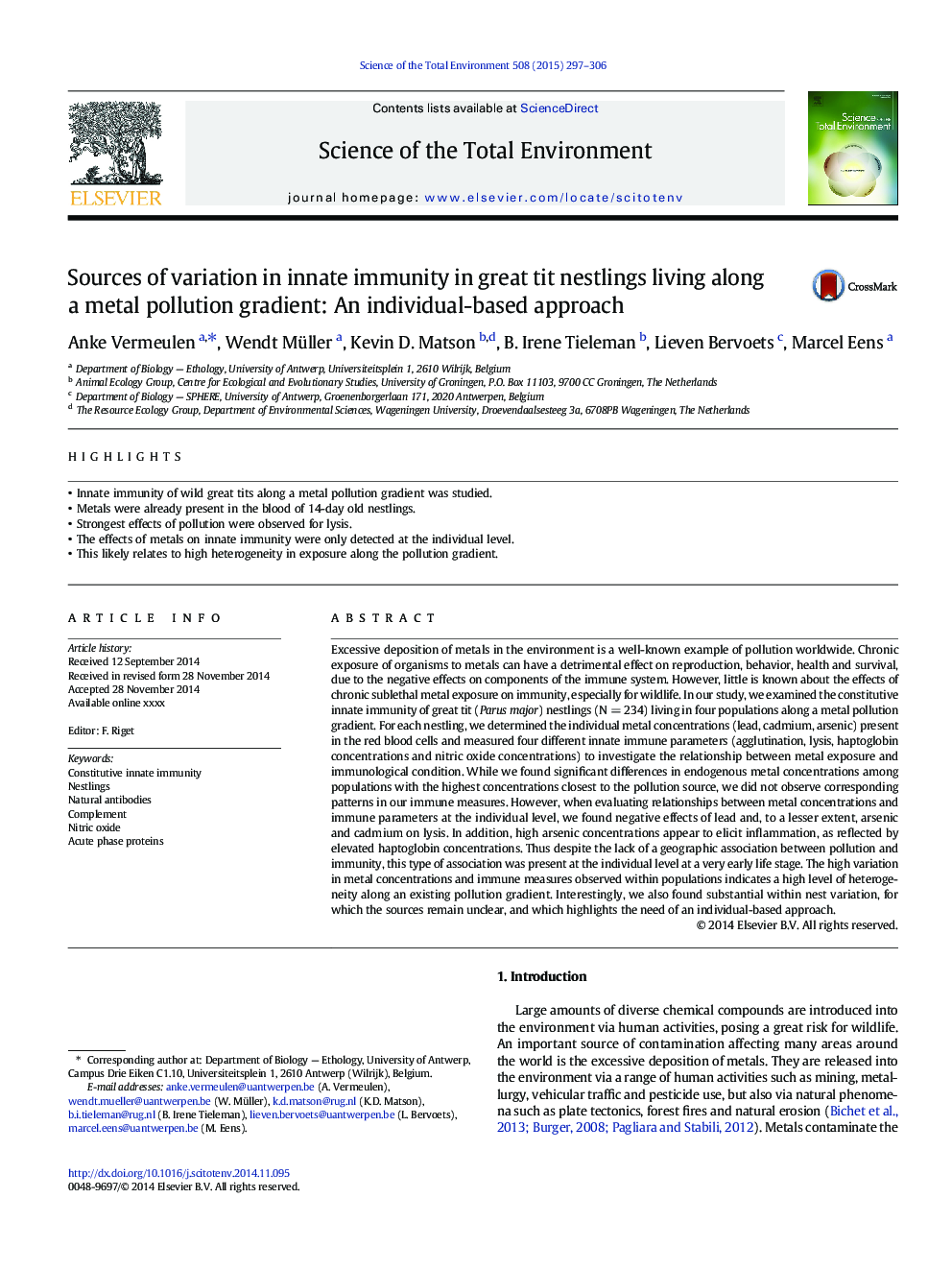| Article ID | Journal | Published Year | Pages | File Type |
|---|---|---|---|---|
| 6327873 | Science of The Total Environment | 2015 | 10 Pages |
Abstract
Excessive deposition of metals in the environment is a well-known example of pollution worldwide. Chronic exposure of organisms to metals can have a detrimental effect on reproduction, behavior, health and survival, due to the negative effects on components of the immune system. However, little is known about the effects of chronic sublethal metal exposure on immunity, especially for wildlife. In our study, we examined the constitutive innate immunity of great tit (Parus major) nestlings (NÂ =Â 234) living in four populations along a metal pollution gradient. For each nestling, we determined the individual metal concentrations (lead, cadmium, arsenic) present in the red blood cells and measured four different innate immune parameters (agglutination, lysis, haptoglobin concentrations and nitric oxide concentrations) to investigate the relationship between metal exposure and immunological condition. While we found significant differences in endogenous metal concentrations among populations with the highest concentrations closest to the pollution source, we did not observe corresponding patterns in our immune measures. However, when evaluating relationships between metal concentrations and immune parameters at the individual level, we found negative effects of lead and, to a lesser extent, arsenic and cadmium on lysis. In addition, high arsenic concentrations appear to elicit inflammation, as reflected by elevated haptoglobin concentrations. Thus despite the lack of a geographic association between pollution and immunity, this type of association was present at the individual level at a very early life stage. The high variation in metal concentrations and immune measures observed within populations indicates a high level of heterogeneity along an existing pollution gradient. Interestingly, we also found substantial within nest variation, for which the sources remain unclear, and which highlights the need of an individual-based approach.
Related Topics
Life Sciences
Environmental Science
Environmental Chemistry
Authors
Anke Vermeulen, Wendt Müller, Kevin D. Matson, B. Irene Tieleman, Lieven Bervoets, Marcel Eens,
